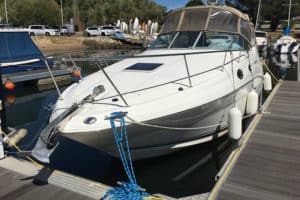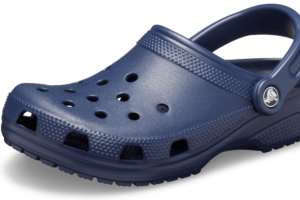When you see a huge cruise ship or cargo ship pass by, it can raise the question, how do boats float? This is an age-old question that many people have of all ages. In this article, I’ll describe how boats float and why they don’t tip over.
How do boats float? A boat, or any object on the water, will float if its downward or gravitational force is less than its upward force or buoyancy. In other words, a boat floats because its weight is less than the volume of water it pushes aside or displaces.
This also explains why a small rock, for example, sinks in water. A rock’s weight is greater than the water volume it displaces. It only displaces a small amount of water, so it sinks.
A floating boat is full of air inside. Air has a density that is much less than water. That is one of the things that keep the boat afloat. When you set a boat on the water, it pushes down and displaces the amount of water equal to its weight.
Therefore, if a boat weighs much less than the weight of water that it can push aside, it will float. The only time a boat will start to sink is when the upward force of the water becomes exactly equal to its weight. When there’s no more air inside the boat, it will also sink fast.
Read on to learn more about how boats float, how much weight they carry on their decks, and why they don’t tip.
How Do Boats Float?
The Pioneering Spirit is the heaviest sea vessel in the world. It is a construction ship that weighs a total of 403,342 tons. Even with its massive weight, this ship still floats on the water. This ship displaces around 900,000 metric tons of water to be able to float.
The density of water is much less than steel. So, how come this super heavyweight monster ship, which carries tons of construction equipment and cargo, does not sink to the bottom of the sea? While the Pioneering Spirit is a humongous ship, it is still a boat just multiplied many times over.
Boats float simply because their density is less than the density of water. Archimedes formulated the original principle of why boats float on water. He theorized that the weight of water displaced by an object is the same as the weight of that object.
So, if the boat’s weight is less than the maximum volume of water that it can displace or push aside, it will float. However, the boat will still sink if its total weight will be equal to the upward force or upthrust of the water.
The more load you put in a cargo ship, the heavier it gets and sinks down further for the upthrust of water to keep it afloat. The air inside the ship also helps to keep it float on the water. When there is no more air inside the ship, it will sink fast.
To emphasize the point, an object on the water will float if its downward or gravitational force is less than its upward force or buoyancy. In other words, an object floats because its weight is less than the volume of water it pushes aside or displaces.
That is why a piece of rock will sink in a river while a much bigger boat will float. Although the rock is heavy, it is very small compared to the river’s volume of water. The rock can only displace a small amount of water. Its weight is greater than the water volume it displaces, so it sinks.
How Do Cruise Ships Float?
A common question people ask is, ‘how do cruise ships float’? The same reason, described above, applies to the largest of boats, such as large cruise ships.
While a cruise ship is heavier than a small piece of rock, it can displace a huge amount of water, even more than its weight, along with its cargo. That is why they won’t sink like a small piece of rock. Moreover, boats can float easily and travel smoothly on the water because of their design.
Scientific Forces Used to Make Boats Float?
Archimedes, the ancient Greek mathematician, figured out the answer to the question: “Why do boats float?” He figured out the principle of why and how do boats float on water. He observed that when you place an object on the water, it displaces or pushes aside an equal amount of water to make room for itself. This phenomenon became known as displacement.
You always displace water when you go into a bathtub full of water. When you go in, the water level rises, and when you get out, it returns to its original level. That is the principle of water displacement. Other factors go into play to keep boats afloat on the water. Let us discuss them one by one.

1. Displacement
When it comes to fluid mechanics, displacement happens when something is immersed in the water (or any liquid), and it pushes water away, taking its place. You can observe displacement when you add an object to a container filled with liquid.
Displacement is the starting point to understand why boats float. This term generally refers to the volume or amount of water a boat or ship pushes aside to be able to rest or float on it. There is always a certain volume of water being displaced for boats or much bigger ships like aircraft carriers to be able to float.
2. Buoyancy
Another contributing factor or force in the floating of a boat or ship is buoyancy. The Greek scientist named Archimedes first discovered this phenomenon. Buoyancy is the upward force or thrust that acts on objects when they are fully or partially submerged in water or any kind of fluid.
When boats are placed on water, enough buoyancy will act upon them to make them float. It also somehow appears that buoyancy reduces their weight, although this is not really scientifically accurate.
The fact is, it doesn’t take too much effort to lift a huge log while floating on water, compared to when it is on dry land. But that is due to the buoyancy force that helps you lift the log easily on the water than on dry land. The original weight of the log is still the same, but its buoyancy effect makes it lighter on water. That is how buoyancy helps in floating boats and much larger ships.
Additionally, displacement and buoyancy always work together. Both always act in synchronicity. The volume required to displace an object is always equal to the amount of buoyancy it receives. This principle is known as Archimedes’ principle. It’s a major reason why some objects float while others do not.
3. Weight and Density
Some objects have the same weight, but they act differently on water. One object can float, another may partially sink, while others may sink even more. You can also observe this fact in objects that have different volumes. Another factor that comes into play, whether an object floats or sinks, is the object’s density.
When two objects have an equal volume, but one weighs more than the other, the heavier object has more density. It is more packed with its inherent substances, making it heavier. So, in relating this to our topic, a boat’s weight and density impact its ability to float.
You can use wood, steel, and other types of materials to make a boat. Even if boats have a combination of these materials, they are still able to float. Making a boat involves considering all of the materials’ densities and weights, including the vessel’s air volume, so that it can float. Air has less density than water, and it acts to balance out the total density of the boat.
Why Boats Don’t Tip Over
Boats are built so that they will not easily tip over. Even huge boats, such as cruise ships, can stay afloat because they take advantage of the force of buoyancy. All types of watercraft, big or small, have a total mass equal to the upward thrust of the water where they rest.
Water vessels maintain a low center of gravity to reduce sideways motion. It is made possible by the use of ballast tanks and by placing heavy equipment below the deck. The buoyancy of a vessel will largely depend on its density. For the boat to float, its total density should be less than the density of water that it is resting on. If not, the boat will sink to the bottom.
The bigger the boat, the greater the chances of it tipping over and sinking. Part of the boat’s design is to minimize tipping over. The hull of a bigger boat often comes from incredibly sturdy but very lightweight materials. Most large boats have hull designs that are wide and deep.
The displacement hulls of these boats have edges that are round in shape. This design minimizes drag and enables the boat to move smoothly on the water. It also enhances the stability of the boats. The passengers of boats like these can enjoy smoother rides and have fewer chances of feeling seasick.
Why Do Ships Float?
Larger ships and boats usually have low centers of gravity because it keeps them stable on the water. A low center of gravity is crucial when it comes to reducing a boat’s chances of tipping over as well as maintaining its uprightness.
It also minimizes the chances of tipping over on low water. To ensure that a boat has a low center of gravity, boat designers place the heaviest equipment below deck. This equipment includes fuel tanks, boat engines, drinking water, and wastewater tanks.
Does It Matter If the Boat Is Sitting on Fresh or Salt Water?
There is a difference if the boat is resting on fresh or salt water. Generally, salt water is denser than fresh water because of the dissolved salt, which increases its mass. That is why salt water is heavier than fresh water. The concentration of dissolved salts determines the exact weight of the salt water.
For this reason, a boat will sit higher in salt water than in fresh water. But there is really no marked physical difference that will justify a statement that says the buoyancy of a vessel is affected by resting on salt water or fresh water. The answer to this question matters only at the scientific level.
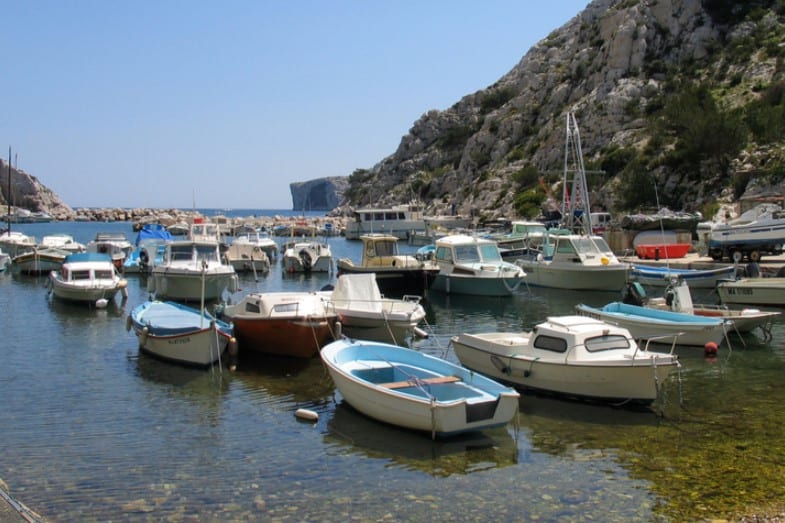
What Can Sink a Boat?
So we’ve answered the question, ‘how do ships float on water’ and ‘how do boats float on water,’ as well as why boats float; next, let’s look at how a boat sinks? One basic principle that we must understand is that the amount or volume of water that a boat can displace is mostly dependent on the volume of the boat.
If you put more load on the boat, the boat displaces more water and sinks further. As long as you don’t overshoot the cargo limit of the boat, it will stay afloat. But the moment you overload the cargo capacity of the boat, it will start to sink.
When the boat becomes fully submerged in the water, it can no longer displace water. It has reached the point where no more buoyancy will counteract the force of gravity.
When this happens, the pull of gravity wins over the boat’s buoyancy and sinks further down. Moreover, if there is no more air left inside the boat, there is no more force to counterbalance the downward pull, letting the boat sink to the bottom.
Another scenario is if the boat springs a leak. Water will get inside the boat, and the air inside the boat will be pushed out. The leak will make the boat heavier, and the force of gravity will pull it down.
Conclusion – How Do Boats Float?
So, how do boats float? How do ships float? A floating boat or ship is full of air inside. Air has a density that is much less than water. It is one of the things that keeps the boat afloat. When you set a boat on the water, it pushes down and displaces the amount of water equal to its weight.
Therefore, if the boat weighs much less than the volume of water that it can push aside, it will float. A boat will only sink when the upward thrust of the water becomes exactly equal to its weight or when there is no more air inside it.
Related reading:

![Microskiff Boats [What Are They? And the Best Microskiffs] microskiff](https://boatinggeeks.com/wp-content/uploads/2021/07/microskiff-150x150.jpg)
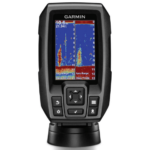
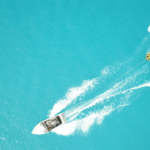


![Seaswirl Boats [What Are They? and Top Seaswirl Models] seaswirl](https://boatinggeeks.com/wp-content/uploads/2021/07/seaswirl-150x150.jpg)
